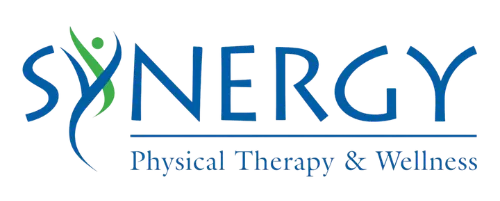Headache disorders affect a staggering 46% of people worldwide, and several independent studies have classified headache disorders as one of the ten most common causes of disability globally[2]. Headaches can have multiple causes including nerve dysfunction, hormonal dysfunction, musculoskeletal dysfunction or injury, and more. Some of the most common headache disorders treated by clinicians include migraines, tension headaches, and cervicogenic headaches—a type of headache caused by injury to the neck. Research has shown that for each of these common headache disorders, physical therapists can provide valuable additions to treatment. Current evidence suggests that the most effective treatments for headache disorders are multimodal, meaning a combination of treatments[2]. At Synergy Physical Therapy and Wellness, our clinicians use clinical reasoning and evidence based solutions to help find the best treatment for each individual. The treatments we use to treat headaches are evidence based and include manual therapy, exercise prescription and performance, as well as dry needling.
Manual therapy is a specialized type of physical therapy used for managing neuro-musculoskeletal conditions. It utilizes manual examination and clinical reasoning to provide drug-free treatment. For headache disorders, manual therapy often includes cervical traction and cervical mobilization. Several meta analyses have been performed investigating its effectiveness on migraines, tension headaches, and cervicogenic headaches. For migraines, studies indicate that individuals who received manual therapy alongside medication experienced greater relief compared to those who used medication alone [5]. Similarly, a 2015 meta-analysis found that multiple sessions of cervical manipulation provided superior pain relief and functional improvement for patients with cervicogenic headaches compared to medication alone [3]. In cases of tension-type headaches, a systematic review revealed that manual therapy reduced pain intensity, frequency, and disability[1]. Patients receiving manual therapy for tension headaches also saw improvement in cervical range of motion[1]. In each of these studies, the best results were achieved with multiple sessions. Manual therapy performed by licensed physical therapists is rarely associated with negative side effects and proves to be a safe and effective treatment for migraines, cervicogenic headaches, and tension headaches.
In addition to manual therapy, physical therapists also use evidence based prescription of therapeutic exercises to help patients manage headache disorders. Therapeutic exercise is a natural and effective treatment for headaches, tailored to address the unique causes of migraines, tension-type headaches, and cervicogenic headaches. Research has shown that moderate aerobic exercise can help prevent migraine flare-ups or reduce their intensity[5]. However, migraines often act as a barrier to physical activity. To address this, physical therapists use interventions such as manual therapy to help patients manage their migraine symptoms and regain the ability to exercise. Physical therapists also provide guidance on suitable aerobic exercises customized to each patient’s fitness level and needs. For tension-type headaches and cervicogenic headaches, therapeutic exercises that engage, strengthen, and stabilize cervical muscles are highly effective [2]. Therapeutic exercises are clinically proven to significantly reduce the intensity, duration, and frequency of headaches[2]. Physical therapists provide a valuable addition to headache treatment by demonstrating and guiding patients through individualized exercise programs to promote relief from headache disorders.
While manual therapy and therapeutic exercise are the most commonly associated physical therapy treatments for headaches, our clinic also offers functional dry needling. This therapy involves the insertion of solid filiform needles into soft tissue to alleviate pain and improve function. The needles used are very small, making dry needling a safe treatment option with minimal side effects. The side effects of functional dry needling are limited to mild discomfort, tenderness, and occasional bruising [6]. A meta-analysis published in the Physical Therapy and Rehabilitation Journal found that dry needling significantly reduced disability scores on the Migraine Disability Assessment Scale (MIDAS) and the Headache Disability Index [6]. When combined with other physical therapy approaches, dry needling can play a pivotal role in addressing the multifaceted challenges of headache disorders.
Headaches can significantly impact daily life, but physical therapy offers a range of effective, evidence-based treatments to help individuals find relief. From manual therapy and therapeutic exercises to innovative approaches like dry needling, these therapies target the root causes of migraines, tension-type headaches, and cervicogenic headaches. By addressing both symptoms and underlying dysfunctions, physical therapy empowers patients to take control of their health and improve their quality of life. If you’re struggling with headaches, consider consulting a licensed physical therapist to explore a personalized treatment plan that works for you.
Written by Caiden McPherson
Works Cited:
[1] Cumplido-Trasmonte, C., Fernández-González, P., Alguacil-Diego, I., & Molina-Rueda, F. (2020). Manual therapy in adults with tension-type headache: A systematic review. Neurología (English Edition), 36(7), 537–547. https://doi.org/10.1016/j.nrleng.2017.12.005
[2] Fernández-De-Las-Peñas, C., & Cuadrado, M. L. (2015). Physical therapy for headaches. Cephalalgia, 36(12), 1134–1142. https://doi.org/10.1177/0333102415596445
[3] Gross, A., Langevin, P., Burnie, S. J., Bédard-Brochu, M., Empey, B., Dugas, E., Faber-Dobrescu, M., Andres, C., Graham, N., Goldsmith, C. H., Brønfort, G., Hoving, J. L., & LeBlanc, F. (2015). Manipulation and mobilisation for neck pain contrasted against an inactive control or another active treatment. Cochrane Library, 2015(9). https://doi.org/10.1002/14651858.cd004249.pub4
[4] Jung, A., Eschke, R., Struss, J., Taucher, W., & Luedtke, K. (2022). Effectiveness of physiotherapy interventions on headache intensity, frequency, duration and quality of life of patients with tension-type headache. A systematic review and network meta-analysis. Cephalalgia, 42(9), 944–965. https://doi.org/10.1177/03331024221082073
[5] Onan, D., Ekizoğlu, E., Arıkan, H., Taşdelen, B., Özge, A., & Martelletti, P. (2023). The Efficacy of Physical Therapy and Rehabilitation Approaches in Chronic Migraine: A Systematic Review and Meta-Analysis. Journal of Integrative Neuroscience, 22(5), 126. https://doi.org/10.31083/j.jin2205126
[6] Pourahmadi, M., Dommerholt, J., Fernández-De-Las-Peñas, C., Koes, B. W., Mohseni-Bandpei, M. A., Mansournia, M. A., Delavari, S., Keshtkar, A., & Bahramian, M. (2021). Dry needling for the Treatment of Tension-Type, Cervicogenic, or Migraine headaches: A Systematic Review and Meta-Analysis. Physical Therapy, 101(5). https://doi.org/10.1093/ptj/pzab068
